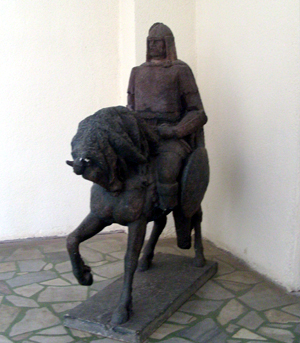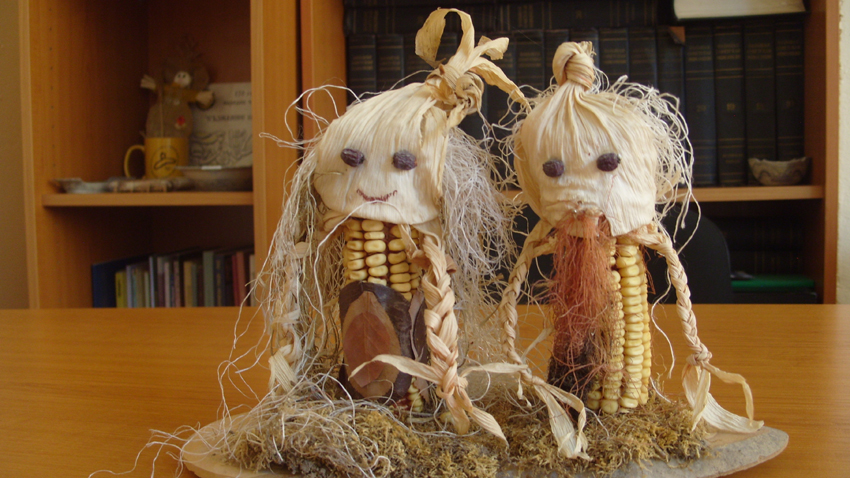Few people know that the history museum of Isperih participated with its artifacts in the Saga of the Thracian Kings: Archaeological Discoveries in Bulgaria exhibition in the period April 16 – 20 July 2015. However, why the museum of Isperih? Its Director Boryana Mateva answers the question:
 “The Isperih Museum was selected just like any other museum by a committee sent from the Louvre and accompanied by Bulgarian experts from the Archaeological Institute with the BAS and also from the St. Kliment Ohridski University. They selected objects that would be presented. Unfortunately they didn’t opt for our most representable vessels and exhibits, but chose a full collection of craftsmen’s tools from the Thracian town of Helis. Of course it is of a great significance to us, as our Sboryanovo reserve and the Thracian king’s tomb are the representative objects for this culture.”
“The Isperih Museum was selected just like any other museum by a committee sent from the Louvre and accompanied by Bulgarian experts from the Archaeological Institute with the BAS and also from the St. Kliment Ohridski University. They selected objects that would be presented. Unfortunately they didn’t opt for our most representable vessels and exhibits, but chose a full collection of craftsmen’s tools from the Thracian town of Helis. Of course it is of a great significance to us, as our Sboryanovo reserve and the Thracian king’s tomb are the representative objects for this culture.”
 The History Museum of Isperih has its permanent exposition, an ethnographic house, a windmill at the village of Belintsi and also the Thracian Tomb of Sveshtari. The museum has a very rich festive calendar. Exhibitions take place for the May festivals of art, with books presented and their authors. The program is related with the Day of Museums – May 18 and the European Night of Museums.
The History Museum of Isperih has its permanent exposition, an ethnographic house, a windmill at the village of Belintsi and also the Thracian Tomb of Sveshtari. The museum has a very rich festive calendar. Exhibitions take place for the May festivals of art, with books presented and their authors. The program is related with the Day of Museums – May 18 and the European Night of Museums.
“The second group of major events are the Days of the Isperih Municipality’s Cultural and Historical Heritage,” Boryana Mateva points out. “Those kicked off on September 28, going on to October 9. The first week is full of lectures and sittings, as usual. We have a workshop with maize leaves, named Beauty and an archaeological exhibition till the end of October. The Corn Fair takes place through the second week – this is its 11th edition, with culinary and ethnographic exhibitions included, along with old, maize-related games for the kids. The Maize Football tournament is popular among students.”
 Here is more from Boryana Mateva:
Here is more from Boryana Mateva:
“Usually in the beginning of the school year we have a program for working with students and schools, distributed later across all schools in the municipality. We propose lectures and a lecturer, covering a certain topic there. We create different objects, related to the main fests of the year – martenitsas, Easter eggs, survachki for New Year. Why do we work that hard with kids? Because they are the main visitors of the town museums. We try to respond to their curiosity. Adults volunteer for the events, in order to show interesting stuff and meet the children with traditions. It turns out that all this has a great success and is accepted with interest.”
English version: Zhivko Stanchev
The shortage of talent is one of the biggest issues in Bulgaria’s labour market — especially evident in the country’s symphony orchestras, both in Sofia and across the regions. The ratio of Bulgarian to foreign musicians in a regional orchestra like the..
Opera prima Gabriela Georgieva is the "Musician of the Year 2024" in the national poll of the classical music show "Allegro Vivace" on the Bulgarian National Radio. The soloist of the Sofia Opera is among the leading sopranos in Bulgaria. Gabriela..
Donvena Pandoursky, a Bulgarian ballet master with an impressive European career, graduated from the State Choreography School in Sofia in the late 1970s and joined the Sofia Opera Ballet. In 1988 she graduated from the Rimsky-Korsakov State..
Bulgaria will be represented by two short films at the EU Film Days 2025, which will take place in the Japanese cities of Tokyo, Nagoya, Fukuoka..
To celebrate 40 years since its inception, the Summer Opera Festival ‘Stage of the Centuries’ in Veliko Tarnovo has put together a rich programme. The..

+359 2 9336 661
